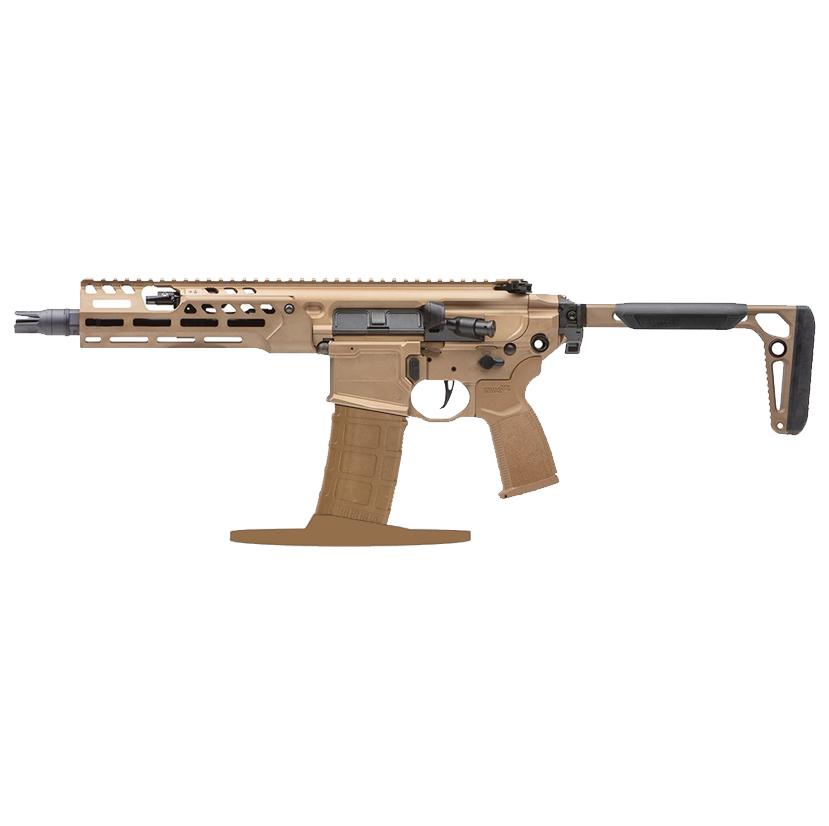
Categories:
Concealed carry has become an increasingly popular method of personal defense, allowing individuals to discreetly carry guns for their own protection. While handguns have traditionally been the weapon of choice for concealed carry, the emergence of AR-15 pistols as a viable option has sparked significant interest among gun enthusiasts and self-defense advocates alike. AR-15 pistols offer several advantages over their compact counterparts, such as increased accuracy, enhanced maneuverability, and improved ergonomics.
These attributes make them a compelling choice for those seeking a versatile and reliable gun for concealed carry purposes. However, carrying an AR-15 pistol presents unique challenges compared to conventional handguns due to their larger size and weight. In this article, we will explore the various aspects of concealed carry with AR-15 pistols, focusing specifically on holsters and considerations that are essential for safe and effective usage.
We will delve into different types of holsters suitable for concealing AR-15 pistols while ensuring quick access when needed. Furthermore, we will discuss important factors to consider when selecting a holster, such as comfort, retention mechanisms, and concealment options. Additionally, we will address key considerations related to carrying an AR-15 pistol in daily life scenarios. This includes discussing clothing choices that facilitate concealment without compromising comfort or accessibility.
Moreover, we will touch upon legal requirements and regulations surrounding concealed carry with AR-15 pistols in different jurisdictions.
Understanding the Basics: What is an AR-15 Pistol? The AR-15 pistol has gained popularity as a versatile and compact gun option for self-defense, recreational shooting, and even competition. While it shares the same name as its larger rifle counterpart, it is important to note that the AR-15 pistol is not classified as a rifle due to its shorter barrel length and lack of a shoulder stock.
In fact, these distinctive features make it legally classified as a handgun in many jurisdictions. At its core, an AR-15 pistol is essentially a semi-automatic gun that utilizes the same operating system as an AR-15 rifle. It typically features a barrel length of fewer than 16 inches and does not have an attached stock. Instead, it may incorporate either a stabilizing brace or be designed to be fired with one hand.
The use of an AR-15 pistol offers several advantages over traditional handguns. Its longer barrel allows for improved accuracy at greater distances compared to standard pistols. Additionally, the modular design of the AR platform enables users to customize their pistols with various accessories such as optics, lights, lasers, foregrips, and suppressors. However, due to their compact nature and unique characteristics, carrying an AR-15 pistol concealed presents specific challenges that gun owners must consider.
These include selecting appropriate holsters specifically designed for this type of gun and ensuring compliance with local laws regarding concealed carry.
When it comes to concealed carry with AR-15 pistols, selecting a reliable holster is of utmost importance. A high-quality holster not only ensures the secure and comfortable carrying of your gun but also plays a significant role in enhancing safety and accessibility during critical moments. Here, we discuss the essential reasons why investing in a reliable holster is crucial for concealed carry.
Firstly, a reliable holster provides proper retention of your AR-15 pistol. It is designed to securely hold your gun in place, preventing accidental dislodging or falling out. This feature is especially important when engaging in physical activities or moving around throughout the day. With a dependable holster, you can confidently go about your daily routine without worrying about the pistol becoming loose or exposed.
Secondly, a good holster offers quick and easy accessibility to your AR-15 pistol whenever needed. In situations requiring immediate self-defense action, every second counts. A well-designed holster enables you to swiftly draw your gun without fumbling around or struggling with obstructions. By providing smooth and consistent access to your weapon, it allows you to respond rapidly and effectively during potential threats.
Furthermore, an excellent concealed carry holster helps ensure proper trigger guard coverage. This essential feature prevents any unintentional contact with the trigger while holstered, minimizing the risk of accidental discharge when reholstering or handling the gun.
When it comes to carrying AR-15 pistols, choosing the right holster is crucial for both comfort and safety. The unique design and size of AR-15 pistols necessitate specific holsters that can securely hold the gun while providing easy access when needed. Here are some types of holsters suitable for AR-15 pistols:
1. Inside-the-Waistband (IWB) Holsters: These holsters are designed to be worn inside the waistband, allowing for concealed carry. IWB holsters provide excellent concealment by keeping the pistol close to your body, minimizing printing and maximizing discretion. 2. Outside-the-Waistband (OWB) Holsters: OWB holsters are worn outside the waistband, typically attached to a belt or tactical vest. This type of holster offers easy access and a more comfortable carry, making it ideal for open carry or when concealment is not a priority.
3. Shoulder Holsters: Shoulder holsters consist of a harness that goes over one shoulder and across the chest, with a holster positioned under the opposite arm. They offer excellent accessibility and distribute weight evenly across your upper body, allowing for extended periods of comfortable carry. 4. Drop-Leg Holsters: Drop-leg holsters attach to a thigh platform or belt loop on your leg, positioning the pistol lower on your body for quick access while standing or sitting.
They are commonly used by law enforcement officers or military personnel who require fast draw times in dynamic situations.
When it comes to carrying your AR-15 pistol, selecting the right holster is crucial for both comfort and safety. With various options available in the market, it’s important to consider several factors before making your choice:
1. Retention System: The retention system of a holster is paramount as it ensures that your gun remains securely in place. Look for holsters with adjustable retention mechanisms such as screws or straps, allowing you to customize the level of retention to suit your preferences. 2. Comfort and Accessibility: Carrying an AR-15 pistol can be challenging due to its size and weight.
Choose a holster that offers comfort during extended periods of wear and allows easy access to your gun when needed. Consider factors like holster material, design features, and positioning options. 3. Concealment: If you intend to carry concealed, finding a suitable holster that effectively conceals the shape and outline of your AR-15 pistol is essential. Opt for holsters with minimal printing or bulging under clothing, ensuring that you maintain a low profile while carrying.
4. Holster Type: Different types of holsters are available for AR-15 pistols, including inside-the-waistband (IWB), outside-the-waistband (OWB), shoulder holsters, ankle holsters, and more. Each type offers unique advantages and drawbacks; choose one that aligns with your specific needs in terms of comfort, accessibility, concealment, and personal preference. 5.
Carrying and concealing an AR-15 pistol requires careful consideration to ensure safety, comfort, and compliance with local laws. Here are some best practices to keep in mind:
1. Choose a Proper Holster: Selecting the right holster is crucial for secure retention and easy access to your AR-15 pistol. Look for holsters specifically designed for AR-15 pistols, offering a snug fit and adjustable retention mechanisms. Consider factors such as material durability, comfort against the body, and ease of drawing the weapon. 2. Optimize Concealment: Concealing an AR-15 pistol can be challenging due to its size and weight.
To enhance concealment, choose clothing that effectively masks the outline of the gun while providing sufficient support for its weight. Experiment with various carrying positions (appendix, hip, or shoulder) to find what works best for you. 3. Practice Proper Trigger Discipline: As with any gun, maintaining proper trigger discipline is crucial when carrying an AR-15 pistol. Keep your finger off the trigger until ready to shoot to prevent accidental discharges.
4. Familiarize Yourself with Local Laws: Before carrying an AR-15 pistol in public, thoroughly research local laws regarding concealed carry permits and specific regulations related to this type of gun. Ensure that you comply with all legal requirements. 5. Seek Professional Training: Obtaining professional training from certified instructors familiar with AR-15 pistols can significantly enhance your skills and knowledge about safe handling techniques.
Concealed carry with AR-15 pistols requires a thorough understanding of the legal considerations and regulations surrounding gun ownership and use. As with any gun, it is crucial to adhere to both federal and state laws to ensure responsible and lawful carrying practices. Here are some key legal considerations for individuals interested in concealed carry with AR-15 pistols:
1. State Laws: Each state has its own specific laws regarding concealed carry permits, magazine capacity restrictions, transportation regulations, and other relevant factors. It is essential to familiarize oneself with the specific laws of the state in which you reside or plan to carry. 2. Concealed Carry Permits: Most states require individuals to obtain a concealed carry permit before carrying a gun in public.
The application process typically involves background checks, fingerprinting, training requirements, and payment of fees. 3. Reciprocity Agreements: Some states have reciprocity agreements that recognize concealed carry permits issued by other states. It is important to understand which states honor your permit if you plan on traveling across state lines. 4. Prohibited Locations: Certain locations such as schools, government buildings, airports, or private property may prohibit guns or have additional restrictions on carrying guns.
Familiarize yourself with these restricted areas to avoid potential legal consequences. 5. Stand Your Ground/Castle Doctrine Laws: Many states have Stand Your Ground or Castle Doctrine laws that define when an individual can use force (including deadly force) in self-defense without a duty to retreat from an attacker. 6.
In conclusion, when it comes to concealed carry with AR-15 pistols, ensuring safety and responsibility should be the utmost priority for every gun owner. The choice of a suitable holster plays a crucial role in achieving this objective. It not only provides comfort and accessibility but also enhances the overall security and reduces the risk of accidental discharge or unauthorized access.
While selecting a holster for an AR-15 pistol, considerations such as retention level, material quality, comfort, concealability, and accessibility should be taken into account. Retention level determines how securely the gun is held in place during daily activities. Material quality ensures durability and longevity while providing adequate protection against external elements. Comfort is essential to encourage regular carrying without discomfort or fatigue.
Concealability allows for discreet carrying to avoid drawing unnecessary attention. Lastly, easy accessibility ensures quick and safe retrieval of the gun when required. Additionally, responsible concealed carry involves adhering to legal requirements specific to each jurisdiction regarding permits, training certifications, storage regulations, and prohibited areas. Ongoing training in guns safety and proficiency is paramount to maintain a high level of competence with the AR-15 pistol.
Ultimately, responsible concealed carry extends beyond just owning a suitable holster or meeting legal obligations; it requires an unwavering commitment to safe handling practices at all times. This includes keeping guns secured from unauthorized individuals through proper storage methods when not in use.
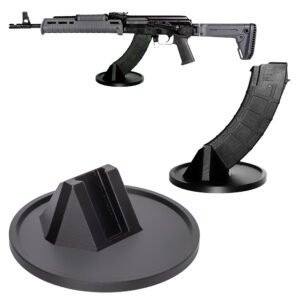
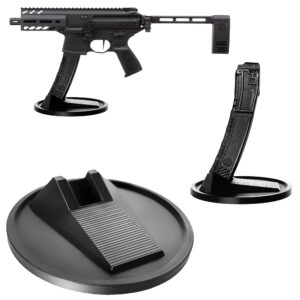
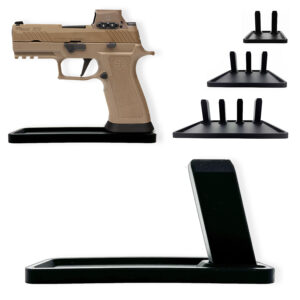


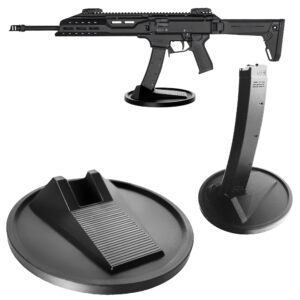


Colt
Colt M4 Carbine
Colt LE6920
Colt AR-15 A4
Daniel Defense
DDM4 V7
DDM4 V9
DDM4 V11
DDM4 ISR (Integrally Suppressed Rifle)
Smith & Wesson (S&W)
M&P15 Sport II
M&P15 Tactical
M&P15T
Bravo Company Manufacturing (BCM)
BCM Recce-16
BCM Recce-14
BCM MCMR Series
Aero Precision
M4E1 Series
AC-15
AR15 Pistol (Various Configurations)
Ruger
Ruger AR-556
Ruger SR-556
Ruger AR-556 MPR (Multi-Purpose Rifle)
Springfield Armory
Saint Victor
Saint Edge
Saint AR-15
PSA (Palmetto State Armory)
PSA PA-15
PSA AR-V
PSA Jakl (AR Pistol)
FN America
FN 15 Tactical Carbine
FN 15 Patrol
FN 15 DMR
Wilson Combat
Recon Tactical
Super Sniper
Protector Carbine
SIG Sauer
SIG M400 Tread
SIG M400 Elite
SIG M400 SDI
LWRC International
IC DI (Direct Impingement)
IC SPR
IC A5
Bushmaster Guns
XM-15 QRC
Bushmaster MOE
XM-15 Patrolman
Rock River Arms
LAR-15 Entry Tactical
LAR-15 Predator
LAR-15 Elite Comp
Stag Arms
Stag 15 Tactical
Stag 15L (Left-Handed Models)
Stag 15 Valkyrie
Noveske Rifleworks
Noveske Gen 4 N4
Noveske Space Invader (AR Pistol)
Noveske Recon
Anderson Manufacturing
AM-15 Optic Ready
AM-15 M4 Carbine
AM-15 Precision Rifle
Adams Arms
AA-15 Piston Rifle
P2 AARS (Adams Arms Rifle Series)
Black Rain Ordnance
SPEC15 Series
BRO Predator
Fallout 15
Diamondback Guns
DB15 Series
DB15CCMLB
DB15EB
Del-Ton Inc.
DTI-15
Del-Ton Echo 316H
Sierra 316M
Windham Weaponry
Windham SRC
Windham VEX-SS
Windham RMCS-4 (Caliber Conversion System)
Christensen Arms
CA-15 G2
CA-15 Recon
CA-15 Titanium Edition
Patriot Ordnance Factory (POF-USA)
Renegade Plus
P415 Edge
Revolution DI
LaRue Tactical
PredatAR
OBR (Optimized Battle Rifle)
LaRue Stealth 2.0
Battle Arms Development
Workhorse Patrol Carbine
BAD556-LW (Lightweight)
Authority Elite Rifle
Faxon Guns
Ascent AR-15
FX-19 (AR Pistol)
Streamline Ultralight Series
KE Arms
KE-15 SLT (Super Lightweight Tactical)
KE-15 Scout Carbine
Primary Weapons Systems (PWS)
MK1 MOD 2-M
MK116 PRO
MK107 (Piston AR Pistol)
ZEV Technologies
ZEV Core Elite Rifle
ZEV AR15 Billet Rifles
Franklin Armory
BFSIII AR-C1
Militia Model
F17-L (Chambered in .17 WSM)
Seekins Precision
SP15 DMR
NX15 Skeletonized Rifle
Havak Bravo
Aero Precision (Additional Models)
EPC-9 (Pistol Caliber ARs)
VG6 AR Rifles
Barrett Guns
REC7 DI
REC7 Gen II
CMMG
MK4 RCE
Resolute 300
Banshee (AR Pistol)
DPMS Panther Arms
Panther Oracle
Panther LR-308
H&K (Heckler & Koch)
HK MR556A1
HK416 (Military Variant)
Rock Island Armory (Armscor)
VR-80 Tactical AR (Shotgun AR Platform)
Troy Industries
Troy SPC-A3
Troy PAR (Pump Action AR)
Wilson Tactical
Tactical Recon AR
Protector Series
F1 Guns
FDR-15 Skeletonized Rifle
BDRx-15 Series
Juggernaut Tactical
JT-15
JT-10 Precision Rifle
AeroSurplus
Surplus AR-15 Rifles (Budget Models)
Thunder Tactical
AR-15 Basic Carbine
Tactical Builder Sets
Radical Guns
RF-15
Forged AR-Series
Dark Storm Industries
DS-15 Featureless Rifles
DS-10 Typhoon
DRD Tactical
Paratus
Aptus AR Rifles
Bear Creek Arsenal
BCA-15
AR Complete Upper Builds
Aero Survival Rifles (ASI)
ASR Tactical Series
Tactical Edge
WARFIGHTER Series
AR-15 Lightweight Rifles
Lone Star Armory
TX15 DMR
TX15 Carbine
HERA Arms
HERA H7
HERA AR-15 Lower Builds
IWI (Israeli Weapon Industries)
Zion-15
DRD Tactical
Tactical Modular Rifles
Quick-Takedown Rifles
V Seven Weapons
1776 Rifle
Hyperlite Rifle
Core Rifle Systems
Core15 Tac III
Core15 Patrol Rifle
Armalite (Original AR-15 Creator)
M15 Tactical
M15 A4 Carbine
DEF15 (Defensive Sporting Rifle Series)
PSA (Palmetto State Armory Additional Models)
PSAK-47 Hybrid (AR-AK Style Hybrid)
PSA Dagger (Pistol Caliber Configurations)
Odin Works
OTR-15
Odin Recon Rifle
Maxim Defense
MDX-508 PDX (Compact AR Pistol)
MDX-510 Rifle